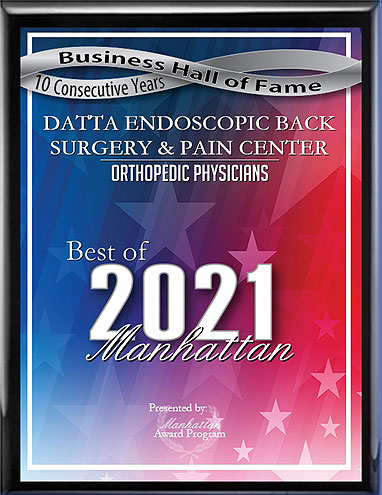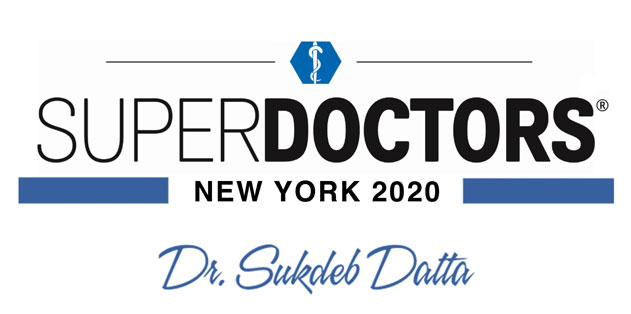Back pain is one of the most common medical complaints in America. Although most cases of back pain are mild and resolve on their own within a few days, back pain that is severe or more persistent may be caused by an underlying disorder. Below, we'll explore some of the causes of back pain, as well as what to expect in terms of the approach to back pain management.
Causes of Back Pain
Chronic back pain is usually caused by problems with the spine. The spine is made up of vertebrae, discs, and the nerves, and damage to any of those structures may cause pain and other symptoms. Back pain is often accompanied by pain in the limbs, numbness or tingling in the limbs, or muscle weakness in the limbs.
Some potential causes of back pain include:
- Bulging discs - A spinal disc becomes misshapen but remains intact. These discs "bulge" past their normal boundaries, causing symptoms as they press against the nerves.
- Herniated discs - Occur when a spinal disc ruptures, causing the inner portion to herniate out. Like bulging discs, herniated discs can press against the nerves.
- Degenerative disc disease - Herniated and bulging discs can be caused by a number of factors. One such cause is degenerative disc disease, which occurs when the discs start to break down over time.
- Spondylolisthesis - Occurs when one vertebrae slips past another, so that the vertebrae are not in alignment with one another.
- Bone spurs - Occurs when abnormal growths of bone occur on the vertebrae.
- Spinal arthritis - Inflammation of the joints between the vertebrae.
- Scoliosis - An "S" shaped curve in the spine. Scoliosis is usually detected in early adolescence, unless it has an unusual underlying cause and develops later in life.
- Kyphosis - A spinal misalignment in which the curve of the upper back is exaggerated, producing a "hunchback" appearance.
- Spinal tumors - Although rare, tumors can grow in the spine. Tumors can be either benign or malignant, and typically require treatment by a specialist.
Potential Treatment Options
The treatment options for back pain management are varied. In many cases, more than one treatment is employed to ensure the most effective management of the condition. The physician will normally start with the least invasive treatment that's likely to be effective, and only move on to more invasive treatments if the initial treatment is ineffective.
Some of the potential back pain management methods include:
- Physical therapy - Can promote spinal alignment, reduce inflammation, and develop the strength needed to support the spine. Patients should plan on continuing to use their physical therapy methods in their everyday life.
- Lifestyle changes - Weight loss, smoking cessation, and exercise can help prevent the chances of developing another spine issue down the line.
- Oral medication - Nonsteroidal anti-inflammatory drugs (NSAIDs) can be effective in reducing the inflammation and symptoms. Be sure to discuss with your doctor before taking NSAIDs for more than a couple days at a time, and always follow the directions on the bottle unless directed otherwise by your physician.
- Epidural injections - For more powerful anti-inflammatory effects, the physician may make an injection of steroids directly into the epidural space in the spine. This allows the delivery of much more medication than would be possible orally, and the effects are local instead of on the entire body.
- Laser spine surgery - During this cutting-edge procedure, small incisions are made along the spine to allow for the insertion of a camera and a laser probe. The laser probe is used to treat herniated discs, spinal stenosis, and other common causes of back pain.
- Stem cell therapy - Stem cells are harvested and concentrated from other parts of your own body, such as the fat. The stem cells are then injected into the affected area of the spine, such as a herniated disc. This treatment has been shown to reduce inflammation in the long run.
- Nerve stimulation - A device is implanted within the body that provides electrical stimulation to the nerves. This is thought to basically interfere with the transmission of pain signals to the brain. Nerve stimulation is performed several times a day.
- Open spine surgery - In cases where minimally invasive methods like laser spine surgery are not appropriate, such as the removal of spinal tumors or the correction of severe kyphosis, it may be necessary to use open spine surgery.
Your Consultation
Only your doctor can recommend a course of treatment that's appropriate for your particular situation, based on the results of your clinical findings. Your doctor will start by asking you about your symptoms, your medical history, and any treatments that have been used in the past for the condition. Next, he or she will perform a physical examination, focusing on the parts of the body which have symptoms.
Based on this information, the doctor will order medical tests that will help to confirm the diagnosis. This will usually include medical imaging such as x-ray or MRI, because the symptoms of the various spine conditions can be very similar. Finally, the doctor will be able to recommend a treatment.
It's always important to fully consider how effective a treatment is likely to be, as well as the risks associated with getting treatment. Even the most minimally invasive or non-invasive treatment method is associated with some risks, and you must make an informed decision. Although your doctor can recommend a course of treatment based on his expertise and clinical judgment, only you can decide whether the benefits are worth the risks and costs based on your own values.
Top NYC Physicians
You can find the top doctors for back pain management in New York City at the Datta Endoscopic Back Surgery and Pain Center. Dr. Datta is a skilled, experienced spine surgeon. He takes a comprehensive approach to back pain management, and offers a wide variety of minimally invasive procedures, including laser spine surgery and stem cell therapy.
To schedule a consultation with the top back pain management doctor in New York City, please click below and enter your information or give us a call at (212) 430-0312.






 EDISCSCULPT
EDISCSCULPT



